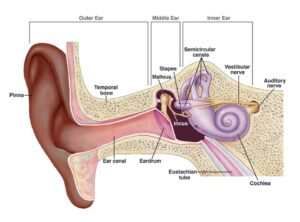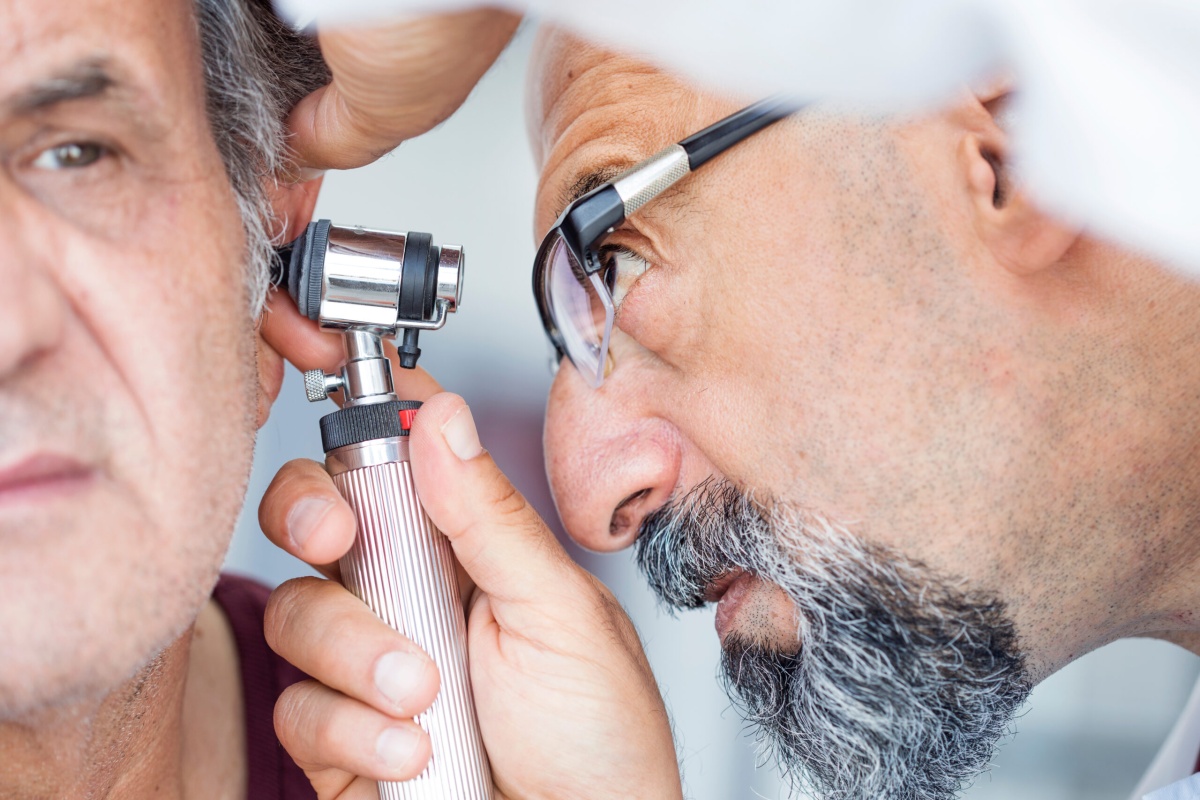Falls are dangerous for seniors and the medical expenses associated with falls can be prohibitive. The most common type of fatal and non-fatal injury in seniors is falling. [1] Most seniors don’t bring up non-injurious falls with their doctors and as a result, fail to take precautions that could prevent falls.[2],[3] Since hearing and balance are closely linked, one key to fall prevention is maintaining good balance. Understanding how the ear functions can help elders, families, and caregiving professionals better understand how hearing wellness can help improve balance and prevent falls.
How Ear Function and Balance Works
Our ears are one of the most visible features of our faces, but the most important parts of the ear can’t be seen. Your ear is divided into three sections, the outer, middle, and inner ear. A well-functioning inner ear is what allows us to have a sense of balance. The Inner Ear is made of a bony labyrinth, vestibular nerve, and auditory nerve. It is the first two, the bony labyrinth and the vestibular nerve, that play the key role in your sense of balance.[4],[5]
Sound travels through the air in waves, down the ear canal where they impact the eardrum (tympanic membrane). The eardrum is a highly sensitive barrier, and as sound forces the membrane to vibrate it moves three bones in the middle ear. The movement of these bones changes the pressure and the variation in pressure moves tiny hairs in the inner ear that convert into electrical impulses. The electrical signals are transmitted along two nerves: the auditory nerve which translates as sound and the vestibular nerve which translates as balance. However, sound isn’t the only thing that moves the tiny hairs in your inner ear. Moving your head, your body, and how you’re orientated move the hairs which tells your brain that you are moving. The Vestibular nerve and the whole vestibular system are integral to our ability to coordinate information that we receive from all our senses.

Ear Wax (Cerumen)
One big takeaway from how the ear works is that it is an incredibly fragile system. While much of the ear is protected by its location in the body, the ear canal leading up to the tympanic membrane is all open to the air. Any damage to the ear canal, or especially to the tympanic membrane, can have serious impacts on both hearing and balance. To protect the ear from dust, bacteria, and microorganisms the ear produces a waxy oil called cerumen, colloquially known as ear wax.[6] When the ear is functioning normally, ear wax traps and prevents dust and other small objects from damaging the ear, overtime the ear wax leaves the ear where it either falls out or is washed away during bathing. As we age, the glands that produce cerumen change and as a result cause the ear wax to be less oily.[7] The drier ear wax is more likely to build up inside the ear and become impacted, which can cause other issues.
If you have residents that are complaining of dizziness, that may be caused by a build-up of ear wax that is pressing upon the eardrum. Dizziness, a sense that the room is spinning, lightheadedness, or unsteadiness when standing can result if ear wax pushes against the eardrum. This can cause the sensation of movement, even when immobile. Hearing loss due to age or ear wax blockage, or damage to the eardrum can impact hearing and balance. According to Aria Care Partners’ Chief Medical Officer for Audiology, Dr. Michelle Sporn, “It’s common for some residents to require a professional cleaning of the ear every few months. Staying on top of excessive ear wax is a first line of defense against falls.” Aria can help your residents in fall prevention, whether through annual hearing exams, routine ear wax removal, or use of hearing devices.
Ear Health & Balance
The ear is intrinsically linked to balance and our ability to move with ease which means hearing wellness is incredibly important to maintaining good balance and preventing falls. When you are interacting with your residents, noticing mobility problems can indicate a problem with their hearing.
Hearing loss can also impact proprioception, or the ability to understand our positioning and movement within space. A lowered sense of proprioception could cause your residents to stumble or misjudge the distance between objects increasing the chance of a fall. Hearing aids don’t just improve quality of life by allowing your residents to feel part of your community, they can help prevent falls.
Reducing the risk of falls is essential for protecting seniors and getting regular hearing tests and cerumen removal as part of their healthcare can help reduce the risk of falls or injuries. Aria Care Partners’ audiologists can help you and your residents in fall prevention and remediation with excellent onsite hearing care.
 Home Page
Home Page Home Page
Home Page

 Share to Twitter
Share to Twitter
 Share to Linked In
Share to Linked In

